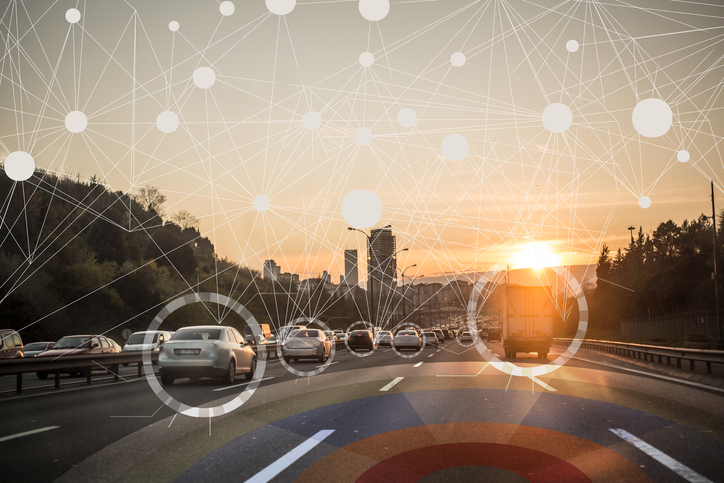Artificial intelligence (AI) will beat you at chess and, eventually, make your driver‘s license superfluous. Big-name companies in the U.S. have realized AI’s ability to power autonomous vehicles (AVs) and are competing to get cars that don’t need your input to public riders first.
Follow Crunchbase News on Twitter & Facebook
About a decade ago, Google quietly started on its self-driving car program, which later spun off and became Waymo. Its parent, Alphabet, now owns the self-driving company. Meanwhile, Google’s challengers emerged one after another. Ford invested $1 billion in Argo AI last February, and GM acquired the self-driving car startup Cruise Automation for $600 million the following month.
Major ride-hailing players are also bashing against each other in the AV space. Uber acquired Otto last August, and it continues its self-driving unit under various scandals and fallouts. Though arriving a little later to the game, Lyft has sealed deals with GM, Waymo, and nuTonomy. The second-place ride-sharing startup also launched a self-driving division in July.
To add a little bit more hype to the AV competition, Tesla recently unveiled plans to work on self-driving and electric semi-trucks.
Much ink has already been spilled on tech companies and carmakers competing in the self-driving car space, yet little has been spent on AV sensor technology startups. Using our human intelligence, we decided to map notable investment trends in this niche market from 2009 and onward.
Sensor Technology 101
Sensors and sensor tech are necessary for AVs’ safe and accurate navigation on urban roads. Currently, there are three kinds in development:
- LIDAR. The bulky dome on top of self-driving cars you’ve probably noticed is LIDAR, which stands for Light Detection and Ranging. By shooting laser lights and measuring the time it takes for the lights to return, LIDAR sensors render a 3D map of their surroundings. The map not only powers navigation but also distinguishes between obstacles like other cars, pedestrians and traffic lights.
- Radar. Radar sensors work in a similar manner to LIDAR, but this type of sensor emits radio instead of light waves. Radar can also track objects by detecting their velocity, range, and angle. But it cannot provide the 3D view created by LIDAR.
- Camera sensors. Radar’s limitation gives us camera sensors. Cameras can capture color and texture in high-level details, and it is a sensor often used to supplement radar and LIDAR systems.
Most self-driving vehicle companies default to LIDARs since they produce much more detailed mappings, especially under low light or glare. Tesla (being Tesla) has opted for the coupling of radar and camera sensors, even though radar-powered software took the life of a Tesla driver last July.
The Sensor Tech Market
To understand the sensor tech market in the U.S., we charted the total amount of venture capital money that went into AV sensor technology startups. The amount of capital raised each year is separated by round types:

Money began to flood into sensor technology startups in 2016, the year when AVs “took the wheel.” More milestones for self-driving cars arrived in 2017, which explains increasing investment. Companies that received early-stage funding prior to 2016 entered later stages after 2016. And every year since 2015, more Seed and Series A funding is flowing into sensor tech startups.
From the graph above, you’ve probably noticed that AV sensor technology did not gain much traction until recently. Therefore, it is appropriate to ask “why would there be specialized sensor technology startups in the first place?” Based on how tech startups have operated historically, there are two potential answers:
- Vertical integration in a new field is difficult. While Tesla tried to create a vertically integrated sustainable energy company, its self-driving division outsourced software from Mobileye until last year. While there are rare cases of companies like Waymo that have taken on both hardware and software, most traditional automakers and software companies look for partnerships. So it’s not surprising that smaller, more nimble companies are leading the field when it comes to creating niche sensors for AVs.
- Startups often start small by focusing on something they are really good at and later expand offerings. The most famous companies in tech are often such tales. Amazon, now known for its cloud computing service and forays into digital media, was once a mere bookseller. Apple sold computers to enthusiasts before it led the smartphone innovation, sold cloud services, and wrapped an arm around the music industry. Turning to the more modern, Box, the enterprise-facing productivity company, once focused purely on cloud storage, has since expanded its ambitions to help power third-party apps and selling security tools.
Developing self-driving cars is a complex and multi-part process. Even if corporations have enough capital and resources, taking on the AV world alone just doesn’t make sense.
Breaking Down Sensor Tech Startups
On our query list, we noticed AV sensor technology startups in the U.S. are quite diverse in terms of focus fields, from LIDAR sensors to AV-specific deep-learning algorithms.
To see how much funding is going into each type of product and service, we charted the market’s current distribution below:

As the chart shows, from 2009 to 2017, most capital has gone into LIDAR companies. Velodyne LiDAR and Quanergy Systems being the top two players in the LIDAR space. This January, Quanergy, having raised $135 million over the last four years, announced that its first affordable LIDAR sensor (costing $250 or less each) will go into full production. Velodyne received $160 million from Baidu and Ford in 2016. The Californian company’s technology has already been tested on public roads in China (thanks to Baidu).
Software companies receive the second largest funding on the pie chart, since AVs rely heavily on AI and computer vision software. One of the more notable software startups, nuTonomy, managed to raise $16 million of Series A, launch the world’s first self-driving taxi service, and partner with Grab, Lyft, and Groupe PSA all within three years.
Startups that work on camera or radar sensors only receive half of the investments that go into LIDAR companies. In accounting for the discrepancy, it’s likely most investors still believe that LIDAR is the premium option in terms of function. Furthermore, camera and radar sensors are less bulky, cheaper, and more available than LIDARs. By selling these lower-cost alternatives, teams such as Comma and Saikou Optics want to democratize AVs.
Looking Forward
Before AVs become available to the mass market, companies need to resolve functionality and cost problems in sensor technology. Whereas LIDARs are expensive, bulky and difficult to supply, camera and radar sensors raise safety concerns, especially after Tesla’s autopilot car crash.
Some people may deem sensor tech startups as tangents, since major self-driving car players often overshadow these gadget manufacturers in the news. However, investment trends indicate that we need to follow sensor tech closely—especially if you want to sit in a truly driverless car anytime soon.
Methodology
We define AV sensor technology startups as companies specializing in hardware, software, or both that are necessary for fully autonomous cars. Note that in our charts, we did not include Ford’s $1 billion investment in Argo AI since the deal has technically made Argo into a Ford subsidiary.

Stay up to date with recent funding rounds, acquisitions, and more with the Crunchbase Daily.



![Illustration of a guy watering plants with a blocked hose - Global [Dom Guzman]](https://news.crunchbase.com/wp-content/uploads/quarterly-global-3-300x168.jpg)
67.1K Followers